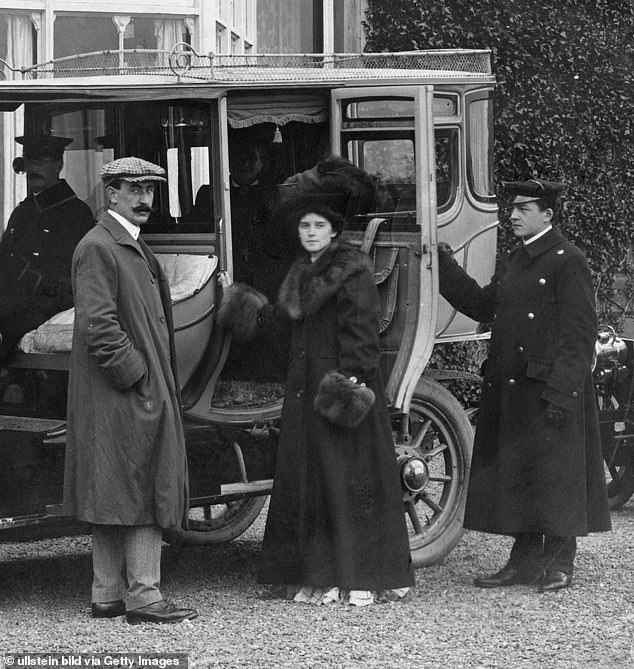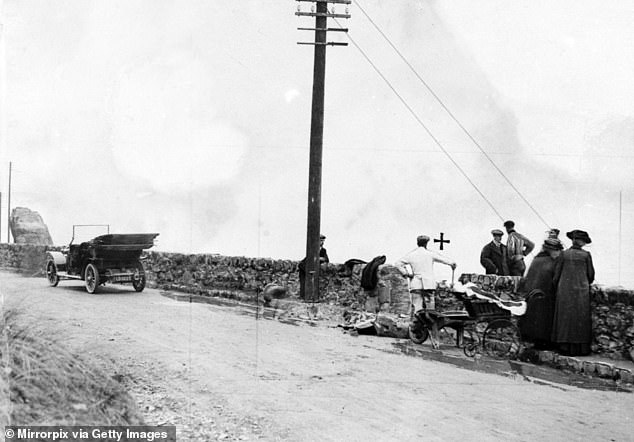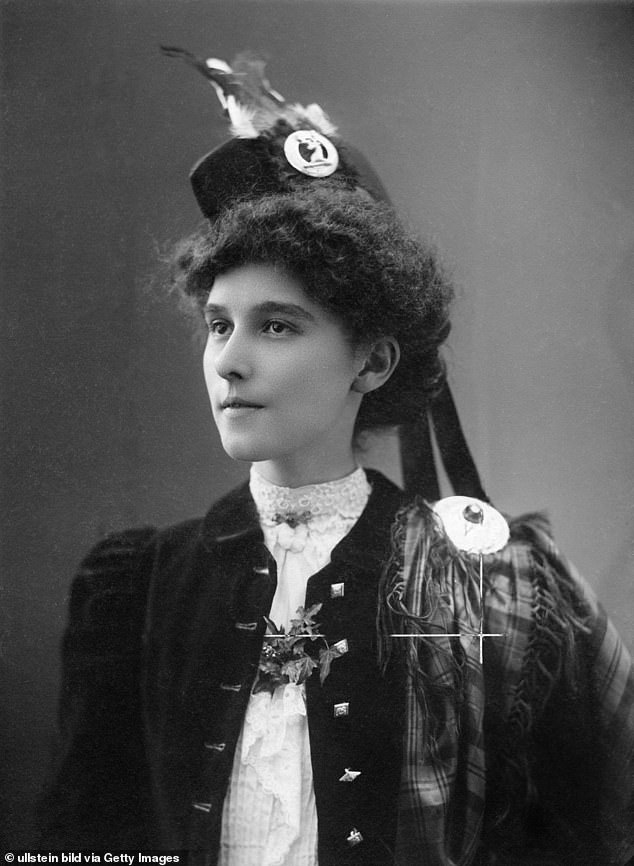As fake heiress Anna “Delvey” Sorokin tangoes beneath the glitter ball on Dancing With the Stars, many are wondering how a criminal could be allowed to enjoy such fame.
However, a new BBC Sounds podcast, The Swindlers with Lucy Worsleywhich also features Professor Rosalind Crone, reveals that Sorokin is not the first female fraudster to achieve national fame; in fact, she dates back to the early 20th century.
Violet Charlesworth was just two weeks shy of her 25th birthday when she disappeared in a car crash in Conwy, North Wales, on 2 January 1909. Initially presumed dead, her apparent tragic end sent the Bangor community into mourning – until details emerged that cast doubt on her fate and identity.
An investigation into Violet and her disappearance uncovered her to be a con artist who claimed she would inherit a huge fortune when she turned 25 and used this bogus scheme to scam people close to her out of thousands of pounds with the promise that she would pay them back after receiving the inheritance.
As the police and the press began to realise that Violet’s story was not all it seemed, the nation was thrown into a frenzy wanting to know everything they could about her true identity, and when she finally turned up, very much alive, in Scotland, she was rewarded with a stage show, a silent film and a host of press interviews.
Violet Charlesworth, who “died” in a car crash in 1909, defrauded her loved ones and creditors of thousands of pounds by posing as an heiress to a vast fortune.
Violet and her sister Lilian had been having afternoon tea at a tea house in Bangor on 2 January 1909, when Violet’s car left the road around a sharp bend on the way home and crashed into a cliff. When the wreckage was discovered, Violet was nowhere to be seen and the 24-year-old was presumed dead after falling into the sea.
Discussing the reaction to Violet’s death, Lucy and the podcast co-hosts reveal there was genuine grief within the community and local press.
“The journalists seemed to be genuinely and deeply saddened by the fact that such a beautiful woman had met such a horrible end,” they explain.

Violet, photographed in 1910 shortly before her arrest and imprisonment, fascinated the nation with her disappearance.

Violet’s car, which crashed on a hairpin bend in Conwy, north Wales, was left virtually unharmed, raising suspicions among police and the press.
However, they add: “Within a few days there is a very clear change in tone.”
The presenters explain that there was something “wrong” with the accident, which did not leave a single trace of blood on the car or on the cliff.
They added: “Her family does not seem at all anxious to find Violet’s body.”
The car is also relatively unscathed, save for the shattered windshield on the driver’s side.
The presenters also discuss Violet’s image within society, as a fiercely independent woman who drove a car alone, often for long distances and at night, which was considered “daring” in the Edwardian era.
She is described as an “Edwardian influencer” who wore “haute couture” and sported what appeared to be expensive jewelry and ornaments.
Furthermore, and highly unusually for an Edwardian woman, Violet invested in the stock market, and was described by one contemporary financier as possessing a “masculine savvy of business”.
As police began investigating Violet’s background, a new theory emerged: that she wasn’t dead, but had run away from someone.
The investigation eventually revealed that the 24-year-old had funded her lavish lifestyle through loans – sometimes from people who couldn’t really afford to give her money, but who were promised they would get a return on their investment in her when she received her “inheritance.”

Pictured: The crash site in Conwy, North Wales, where Violet’s car was found but she was nowhere to be seen.
One of Violet’s victims was a former neighbour and widow called Mrs Smith, who lent the scammer £400 – virtually everything she had ever saved.
Another was Dr James, Violet’s ex-fiancé, who lent her £5,000 while they were together. However, the relationship ended due to Violet’s reckless spending.
Why did people keep lending Violet money? She always bragged about being “fabulously rich” by the time she turned 25.
However, the podcast hosts explain, just two weeks before she was set to inherit this enormous fortune, Violet’s car crashed and she disappeared.
They also reveal: ‘A private investigator has been chasing her and on New Year’s Day, the day before the accident, she was issued a summons for non-payment of a loan.’
As police and the press continued their search for Violet, the podcast explains how her parents, sister and brother Fred, barricaded themselves in the family home and refused to let anyone in, including creditors, who wanted the money Violet owed, and police officers, who wanted to seize her property.
Two weeks after Violet’s disappearance, her 25th birthday arrives and, as the podcast hosts explain, “it becomes abundantly clear that there is no inheritance, it was a fake fortune, Violet is a fake heiress.”
As the investigation into Violet’s whereabouts deepened, a woman named Margaret McLeod checked into a hotel in Scotland (a place close to Violet’s heart) for a few days, before leaving and heading further south without paying her bill.
The podcast reveals how rumours began to circulate that Margaret was in fact Violet Charlesworth; before Margaret took the shocking step of sitting down with a newspaper to give an interview in which she denied the rumours, drawing national attention to herself.
A few days after strongly denying that she was actually Violet, Margaret changed her mind and sat down for another interview where she confirmed that she was the missing “heiress.”
“His plan appears to be to take control of the story and cash in on his newfound celebrity,” the podcast states.
For a brief time, the nation became obsessed with Violet as she gave interviews to several national newspapers, including the Daily Mail, and received large fees for doing so.
He also wrote a song about her faked death, called Goodbye Girlie, which was printed in newspapers.
A play was written about Violet, which debuted at the Hippodrome in London and cast her as herself. She was also signed to a silent film in which, once again, she was the star.
As the podcast hosts discuss Violet’s fake, lavish lifestyle and newfound fame, they compare her to New York socialite Anna Delvey, who claimed to be a Russian billionaire and defrauded creditors of an estimated $275,000 before eventually being arrested and jailed. She is currently under house arrest and is a contestant on Dancing With the Stars.
However, behind the scenes, the police investigation continued and it was discovered that he owed a total of £12,000 to people he had borrowed money from and another £12,000 in bonds. He eventually declared bankruptcy.
And the hype surrounding her fame also began to wane when she suffered from stage fright while performing in the play about her own story, and audiences also routinely booed her when she left the stage.
A year after the first accident, Violet and her mother, Miriam, were arrested and charged with fraud. Both were sentenced to three years in prison.
In 1912, Violet was released and made her way to Scotland. Since then, there is no record of her.

